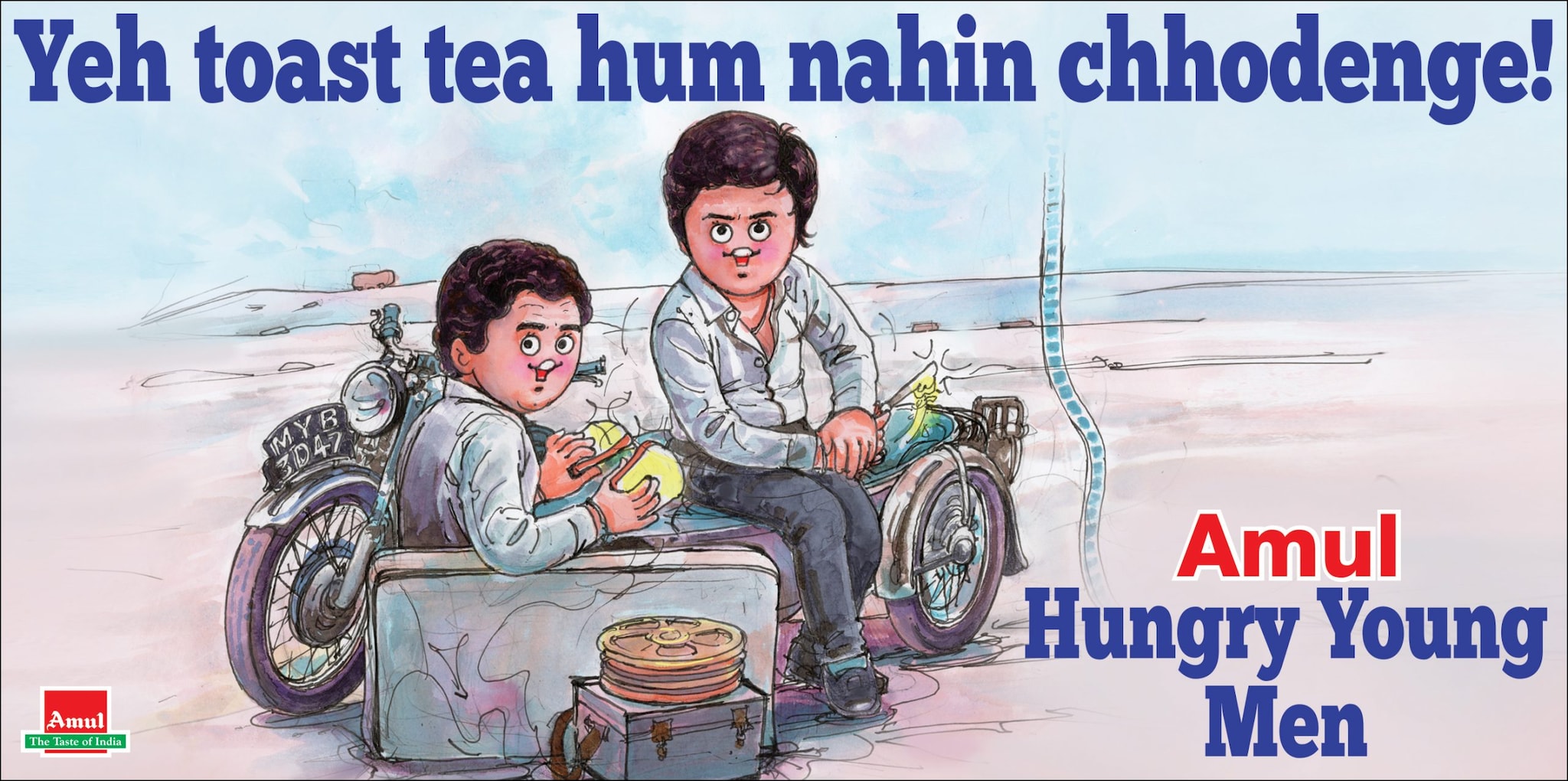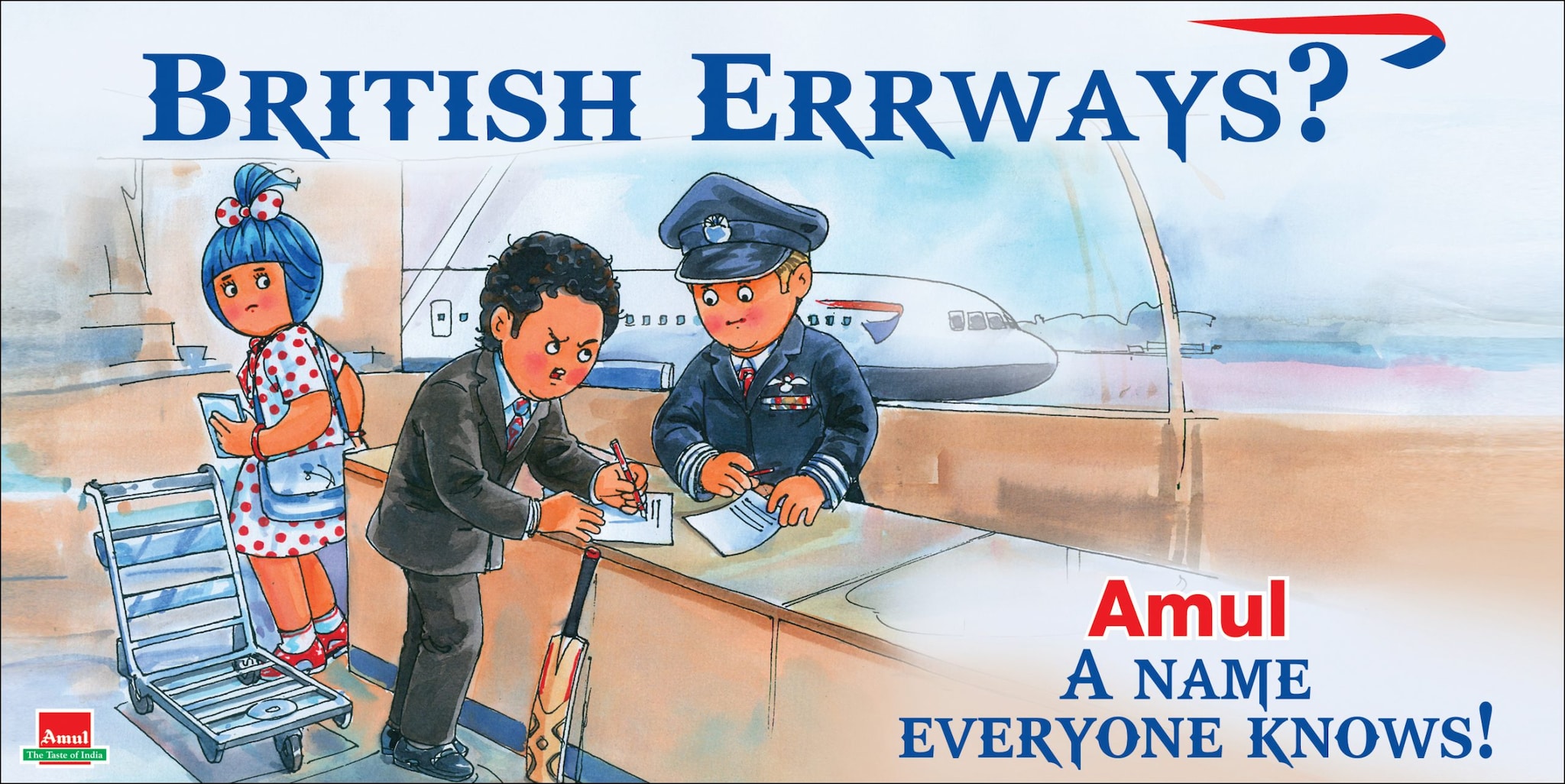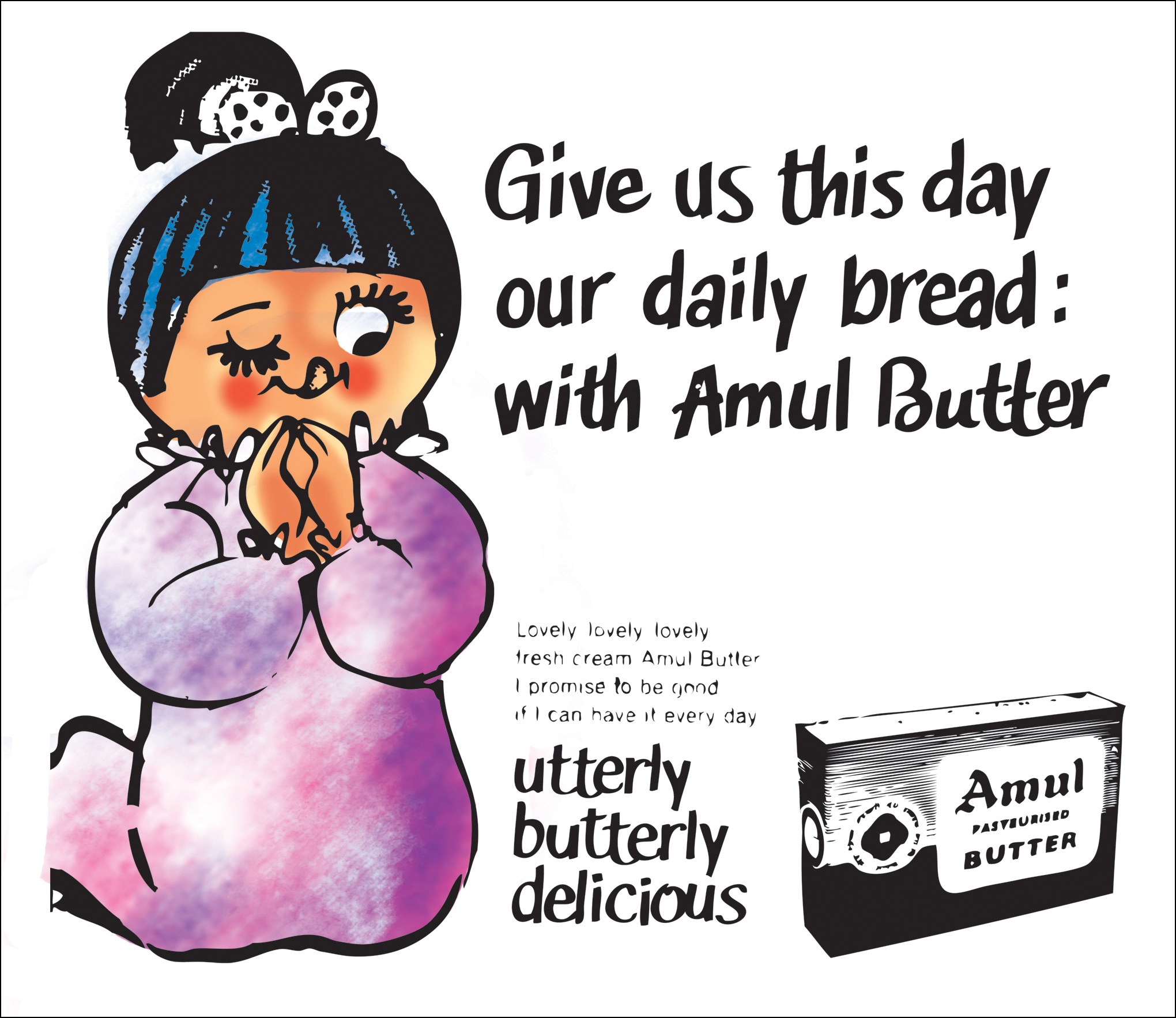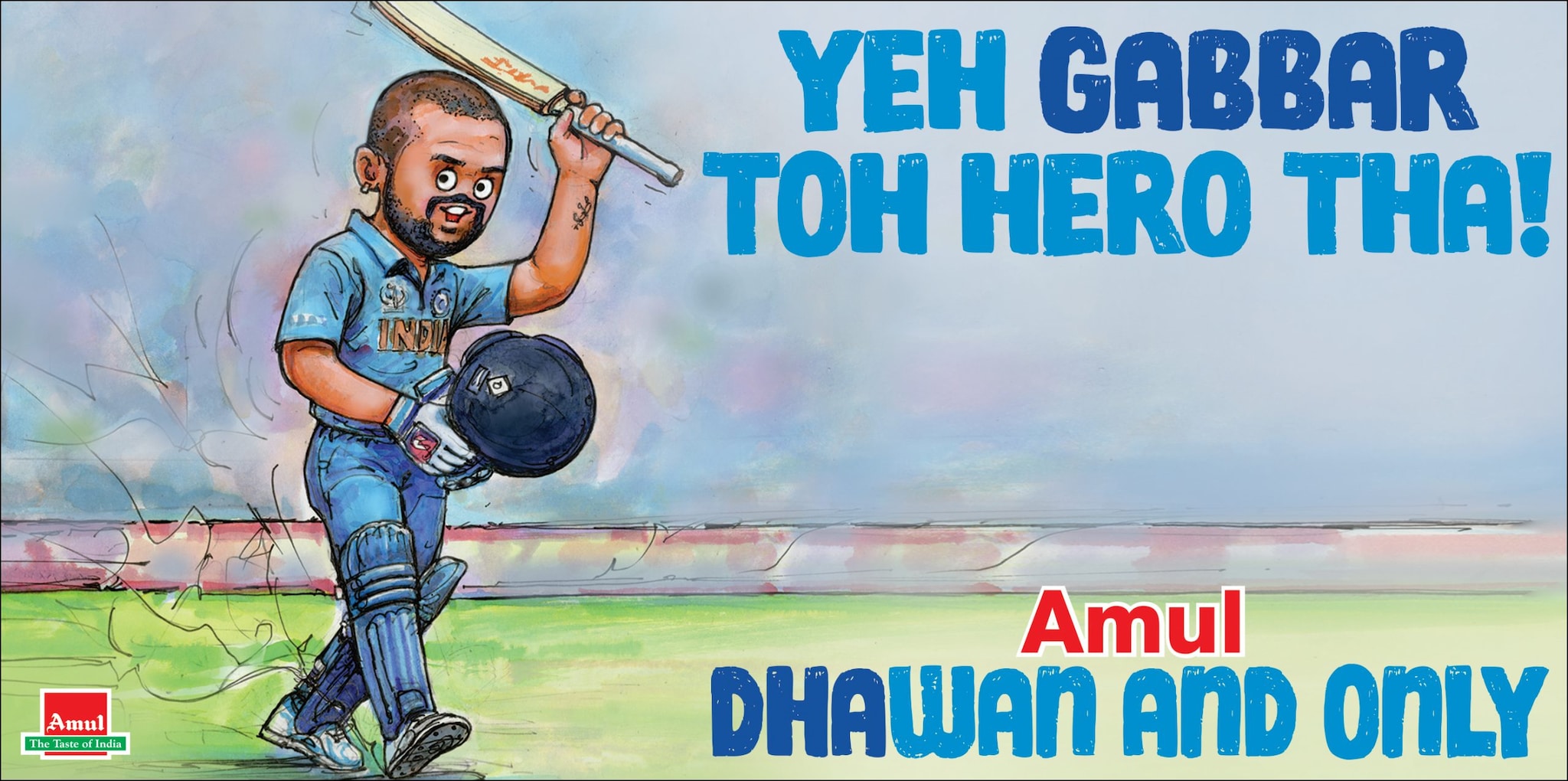On August 21, with a Brand Strength Index (BSI) score of 91 out of 100 and an AAA+ credit rating, dairy brand Amul was hailed as the world’s strongest food brand, per Brand Finance’s Food & Drinks 2024 report.
Amul, which has been delighting the taste buds of millions, is incomplete without its mascot, the ‘Amul girl,’ whose witty turns of phrase have captured the pulse of the nation for decades now.

Be it her cheeky one-liner on Salim-Javed’s show ‘Yeh toast tea hum nahin chhodenge’, or bidding farewell to cricketer Shikhar Dhawan on his retirement, ‘Dhawan and Only’, or raising eyebrows with ‘British Errways’, the Amul girl, who turned 58 this year, has never failed to echo the mood of the nation.

As the late Dr. Verghese Kurien, Founder, GCMMF, stated in Amul’s INDIA 3.0 book, “The Amul girl has given the brand just the image we had in mind — that of a precious, ‘priceless’ product which the consumer can trust completely.”
Rahul daCunha, Director, daCunha Communications, who took on the responsibility of creating the topical Amul ads in 1994, in a conversation with Storyboard18, said, “The Amul girl is a cheerleader, conscience-keeper, celebrity-watcher. She’s watching everything. She’s watching this country.”
A star is born
In 1966, when the Advertising and Sales Promotion Company (ASP) was assigned the task for Amul butter, Sylvester daCunha was a manager at the agency. Amul had been on the shelves for two decades (founded in 1946), but Polson butter was considered a much bigger player in the market.
As narrated in Amul’s INDIA 3.0 book, a need was felt to replace the tagline ‘Purely the best’ with something that was catchy.
The creative team wanted a mascot that could be the face and voice of the brand. Sylvester thought of a moppet and explained what he had in mind to Art Director Eustace Fernandes. As stated in the book, after a few tries, out came a cherubic little girl with big eyes in a polka dotted frock, a matching ribbon in her ponytail, and blue hair. According to Amul’s INDIA 3.0, Sylvester said, “She was licking her lips as though to say, ‘Utterly butterly delicious’.”

The mascot and the line ‘Utterly butterly delicious’ appeared on a few lamp-post boards in Mumbai. The subsequent outdoor campaign showed the Amul girl praying by her bedside, and the copy went: “Give us this day our daily bread — with Amul butter.”
In 1969, Sylvester started daCunha Communications, and Amul decided to go with him. The rest, as they say, is history.
Behind the scenes
Every Sunday evening and Monday morning (and even otherwise, if needed), Rahul and Manish Jhaveri — who joined daCunha Communications in 1994 as a copy consultant — touch base on the potential topics for the week. Once a topic is okayed, Jayant Rane, who joined daCunha Communications in 1986 and began to sketch the Amul moppet in 1988, is briefed about it and he begins hand painting them.
These are then segregated per their importance. “Let’s say the Monday topic won’t last till Tuesday or Wednesday. It’s got a one-day relevance. But Tuesday’s topic may last a week. So what’s immediate has to be done immediately. Because it won’t be as topical and relevant on Wednesday. On the other hand, a topic that may be of interest to us may not be a trend yet. So that will wait till Friday,” stated Rahul.

Jhaveri, who has a good understanding of pop culture, said that they use Hinglish as it helps turn around things quickly and is more colloquial, hence more relatable. The team also looks at the titles of popular songs and movies, which could lend themselves to some humour.
Two decades back, when the internet did not exist, the team looked for topics of national interest. But the arrival of the internet has given them the flexibility to do topics which are relevant only to the digital audience, said Rahul. “Newspapers give us the topics, but the internet gives us the trends. The internet tells you what people are thinking,” he added.
“A lot of our digital ads are not seen on hoardings and newspapers. Digital has given us more topics for younger audiences, for Insta-reel and WhatsApp audiences. I’m happy that now I have an older as well as a younger audience,” he said.
Over the years, though the girl has lost some weight, her polka dotted dress, matching ribbon, lack of a nose, and glossy blue hair remain unchanged.
Jhaveri ensures that their cheeky one-liners never hurt anybody’s sentiments. “Abrasive humour is very easy and can also make people laugh, But that’s cheap laughter. We’ve never aimed for that. Our aim is to make people chuckle,” he said.
Also, the Amul girl stays away from topics like natural disasters, religion, and sensitive topics like rape.
Lingua franca
Illustrating how the consumer has evolved, former daCunha Communications Managing Director Bharat Dabholkar, who was at daCunha Communications from 1979-1991, said that Amul girl was Indianised when he took up the mantle at the agency.
Depending on the town or locality, the girl spoke in the local language. “Though the ads would appear in print, we also put our money on hoardings as that would get the maximum mileage,” Dabholkar said, and added, “I started doing Marathi ads for Pune or Dadar (in Mumbai), Gujarati ads for Ahmedabad, Bengali for Calcutta, and Tamil for Chennai.”
But, today the scenario is different.
“Regionalisation is not so much the language but the topic,” said Rahul. On August 16, the Malayalam film ‘Aattam: The Play’ won the National Award for Best Film. This featured in the ad put up all over the south. Similarly, when Gujarati actress Manasi Parekh won the National Award for Best Actress for ‘Kutch Express,’ that was in the ad put up in Gujarat.
Read More: What are Amul Topicals how did they create a legacy?
“If an ad is created on a national subject, it will be in English, because it is still the most spoken language across the country. Even people in eastern India don’t really speak much Hindi,” Rahul added.
Jhaveri said that of the 12 to 15 topical ads that are released in a month, almost seven to eight get picked up by newspapers, including publications like the Times of India, Economic Times, Bombay Times, etc., which is free publicity.
Celeb quotient
According to Rahul, cartoon mascots are the best as they stand the test of time compared to celebrity endorsements, where the shelf-life is short. With Amul, the agency never felt the need of a celebrity because the Amul girl is the biggest celebrity of all. “You have to create a character and stay with that. You can’t change it. Everything has a saturation point. It’s for you to keep it fresh,” asserted Rahul.
Dabholkar calls Dr. Kurien the world’s best client for the unwavering faith and trust he reposed in the agency. The result is the Amul girl, an icon not just in Indian advertising, but all over the world.
Read More: Amul completes 50 years; A look back at its journey
